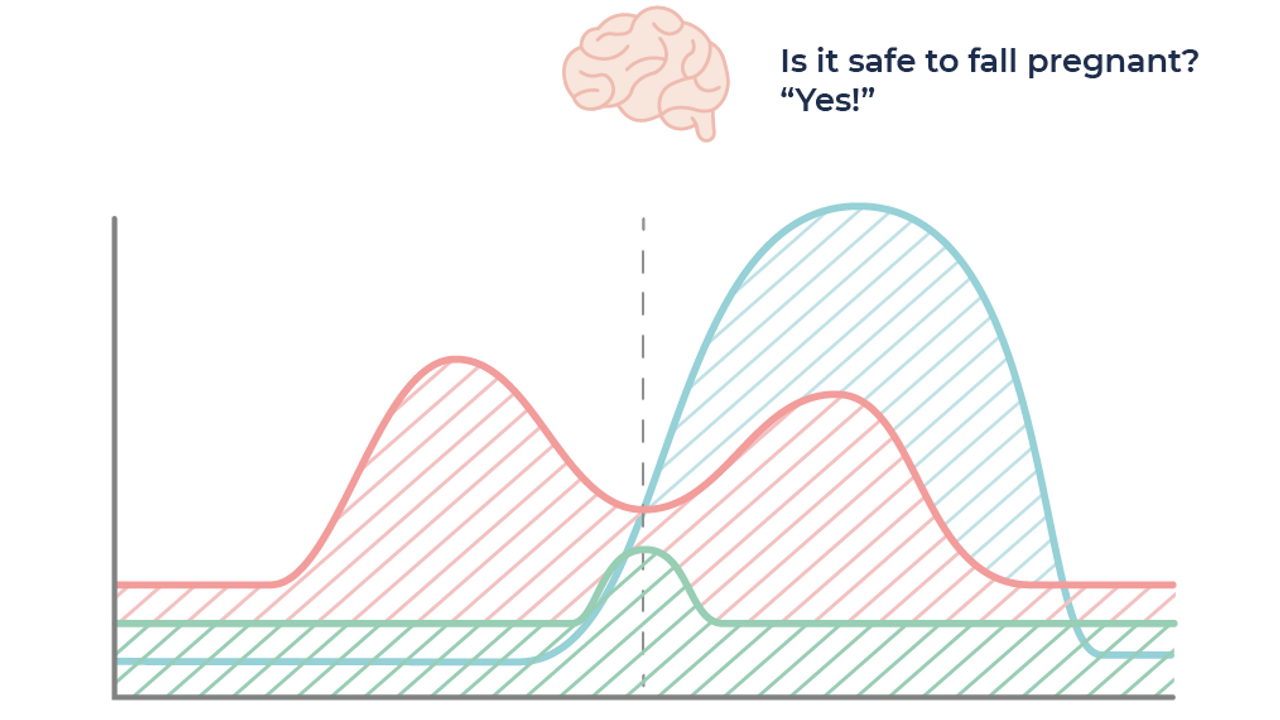
Overview
A textbook period is 28 days, however it can be normal to have a period anywhere from 21 days to 35 days (up to 45 days if you’re still a teenager). Your period is split into 3 phases; early phase, ovulation and late phase. As you may know, hormones change during these phases, this is to help grow and mature the egg, release the egg and allow it to attach to the uterine wall for a little swimmer to come and fertilise it. Sounds simple, right? It is a beautiful nuance between the brain, gut and reproductive organs that creates these changes. When something is off, everything else alters. Hence hormonal issues but more on that later, let’s start with understanding what happens when everything is working as it should.
Early Phase
Also known as the follicular phase, this is where your body grows and develops your egg to get ready to be fertilised (maybe). Oestrogen is the dominant hormone here, as it’s like super juice, it helps things grow in females bodies. One of which is your eggs (other things like muscle and bone too). This phase spans from the first day of bleeding to ovulation. It is the only variable part of your cycle, so that’s why you may be a 28 day girl, but your BFF could be a 35 day girl. It can be normal for some women to have a couple of days of spotting before ovulation as oestrogen dips and progesterone is still low, this is most common in fit women).
Ovulation Phase
This is the ‘New Years Eve, BALL DROP’ moment. Once oestrogen levels hit their peak and the brain perceives it is safe to fall pregnant, ie. no outer stress on your body or reason for your cortisol (stress hormone) levels to raise (of which there is a few), the brain will release a hormone called Luteinising Hormone (LH), this signals the release of the egg, only then will progesterone be created. So if no ovulation, no progesterone. This might be fine for a couple of months, but the more often this happens, the more ‘out of whack’ the ratio between oestrogen and progesterone can get. Ovulation has been linked to a more resilient mental state, healthier digestive function and stronger bones as we age. So it’s more than just being able to fall pregnant. Ovulation is key, it occurs over 1 day, but you’re fertile window is generally around 3-6 days, because that’s how long sperm can live for.
Late Phase
This length of this phase is pretty well locked in, it ranges from 10-16 days depending on the woman. Here is where your Progesterone dominates (Up to 100x more than oestrogen). Progesterone is important for with-holding a pregnancy as it helps to develop the cervical mucous. Practically you can notice thicker white discharge around the earlier stages of this phase. When your body detects the egg is not fertilised, oestrogen and progesterone spike (around 5 days before bleeding) and then rapidly drop off, this drop off in both hormones triggers bleeding and the start of your next period. Note: The hormone spike in both of your hormones 5 days before your period has been linked to the PMS signs we can experience… Read on below for a run down on how your hormones can impact the rest of your body.
Categories
All Categories anxiety autoimmune bloating body connection change fatigue female fundamentals fertility general grief identity libido menopause menstrual cycles migraines pcos periods podcast episodes pregnancy puberty recipes self love skin stress supplements thyroid what's my body telling me?



